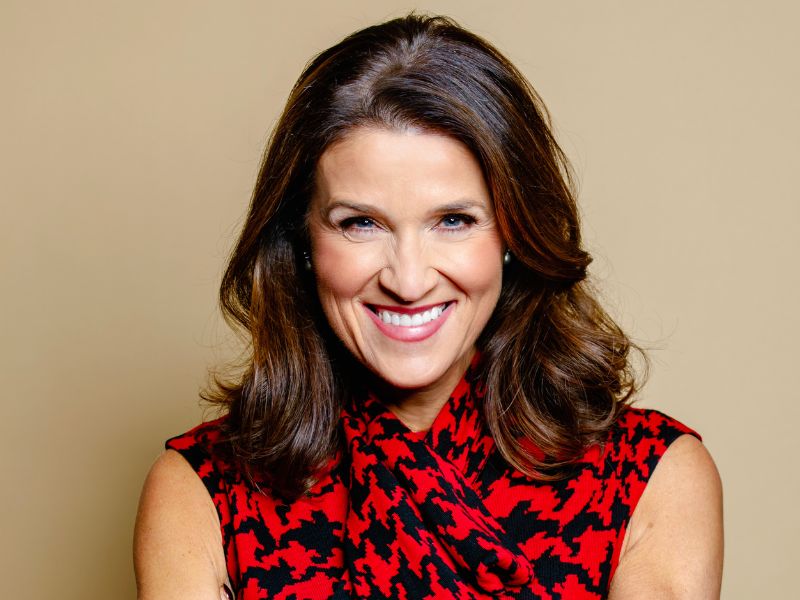Key research findings on the lack of women in MBA case studies
I decided I needed to study. I wanted to understand the latest theories about how people and organisations work. My career had evolved from general management positions in leading organisations, mainly in the beauty sector, to over the past ten years working as a leadership coach with individuals and corporate teams. The course I wanted to take was offered at a French business school listed as one of the top ten in the world. I was so excited, but my excitement soon turned to amazement—amazement tinged with a little (okay a lot) of frustration. Walking around the campus, I wondered where the other female students were. In the class room – where were the women professors? Although 48% of students in my course were women, it was clear that most other courses did not share this gender balance. After a while, I also noticed the lack of case material that featured women as a leader or manager, or even mentioned women at all. In fact, across my eight modules studied, I read one paper with a woman in it and as the leader she doubted herself instead of exhibiting confidence or strong leadership! Where was I? Why was I being taught the latest in leadership theory and not seeing women anywhere? I had nothing that showed a possible “me” in the course material, in front of the class or on campus.
My master’s thesis topic was therefore easy to pick. I decided to research the presence of women across award-winning and bestselling case papers distributed by The Case Centre, one of the leading distributors of business school case papers, from 2009 to 2013. These papers are used widely in business school programmes worldwide and are indicative of what students are reading in their courses. The majority of business schools use case papers as a teaching method in their MBA and other programmes. Among other things, MBA programmes propose to teach students how to lead.
I was surprised and shocked by two things: firstly, that this research had not been done before, and secondly, by the outcomes that I found.
Three key themes evolved:
- Invisible women
- Leadership descriptors with stereotypically male attributes
- “Pink” areas of work
Invisible women
I compiled, read and researched 53 different papers across a five-year period, across both categories of The Case Centre’s award-winning and bestselling papers. What I found was that, overwhelmingly, women were not portrayed in leadership positions. In fact, they were hardly represented at all in these studies. Women, leadership and business seemed to be at odds across the papers.
Out of the 53 papers, women were the protagonists (the leader) in just seven papers. Of these seven papers, two were originally written with a male protagonist and had the name, and consequently the gender, changed. This meant that only five (or 9%) of the 53 papers were originally written with a female lead. In five of these seven papers, the female protagonist was the only woman present in the paper. Women were mentioned in 29 of the papers, but I deemed women to be present in only 11 of these due to the scarcity of description and attention given to women in the rest. Women were totally absent in 24 (or 48%) of all papers. Of the 53 papers, 52 mentioned at least one man, and in 29 of them, there was a “founding father” mentioned in addition to the male lead.
These results led me to devise an adaptation of the Bechdel test for movies to use on case studies, which I called the Symons test. In order to pass this test, a case paper had to have: 1) a woman in it who was 2) in a leadership position(protagonist in the research) and 3) who spoke to another woman about the business. Just three of the 53 papers met the criteria for all three categories. Women were not present in the papers, were not portrayed as leaders and when they were leaders they were alone. Something I was experiencing all too well at the school.
Stereotypes of leadership as male
Along with the lack of female leaders, the papers also represented leadership using attributes that are stereotypically assigned to men. For example, here are some words used to describe the male protagonists presented in my thesis and taken from the case studies: “passionate, committed, disciplined, results-driven, strong-willed, courageous, energetic and able to see the big picture” (Symons2014- Wherearethewomenleaders? Thesis INSEAD).Even in cases where there were female leaders, their male counterparts were described in more detail.
It suggested to me that the correct leadership style is one with male attributes.
Women were not present in the papers, were not portrayed as leaders and when they were leaders they were alone. Something I was experiencing all too well at the school.
Pink topics
The OpEd Project 2012 Byline Report tracks the most influential ideas and individuals in U.S. national and global conversations. OpEd coined the phrase “pink topics” to describe topics that either 1) fall into what was once known as the four Fs: food, family (including relationships, children, and sex), furniture (home) and fashion or 2) women-focused subject matter such as women-specific health or culture. Pink topics are not seen as any less important than other topics; they simply identify areas where female writers are predominantly in print. All of the case papers studied that had woman protagonists fit into these pink topics, such as Dove and Ikea. Contrast that with the leading category for papers with a male protagonist—Information Technologies (IT), in which 31% of papers coming from this sector had all-male leads.
Finally, what does this research tell us about business schools that are purporting to teach us how to lead? Do business schools not have a responsibility to teach leadership in all its different forms and open up learning for men and women to different ways of leading? Women and men need to see women in business and as leaders. How can we change work environments loaded with unconscious gender bias when the very places in which we learn about business are, themselves, steeped in such stereotypical bias? A start would be to add more women into their case papers! At the same time business schools need to analyse and understand, from the top down, the explicit and implicit messages about gender and leadership that all parts of their organisations and programmes convey to students. Business schools need to recognize the role their institutions play in maintaining this status quo and address how they can change these messages.
At The Case for Women we hope to improve gender balance in these institutions through researching learning materials and tracking women’s overall presence at business schools.
So I wonder, have you studied for an MBA or executive programme? Did you notice the lack of women in your papers and as professors? As a woman, were you part of the minority in your course? If there was anything else you noticed on your course about gender, leadership and business, let me know. If you are interested in our research, please contact us on [email protected].
 About the Author
About the Author
Lesley Symons is the founder of The Case for Women. Lesley has worked on three continents in general management positions with companies such as L’Oreal and Estee Lauder before becoming a leadership coach. She runs leadership programmes and facilitates large groups. She has a master’s degree in consulting and coaching for change from INSEAD.
At The Case for Women, we are passionate about improving the presence of women in business, business schools and in their learning tools. We hope to improve gender balance in these institutions through researching learning materials and tracking women’s overall presence.
Find us: www.thecaseforwomen.com
Tweet us: @thecaseforwomen
Contact us: [email protected]








